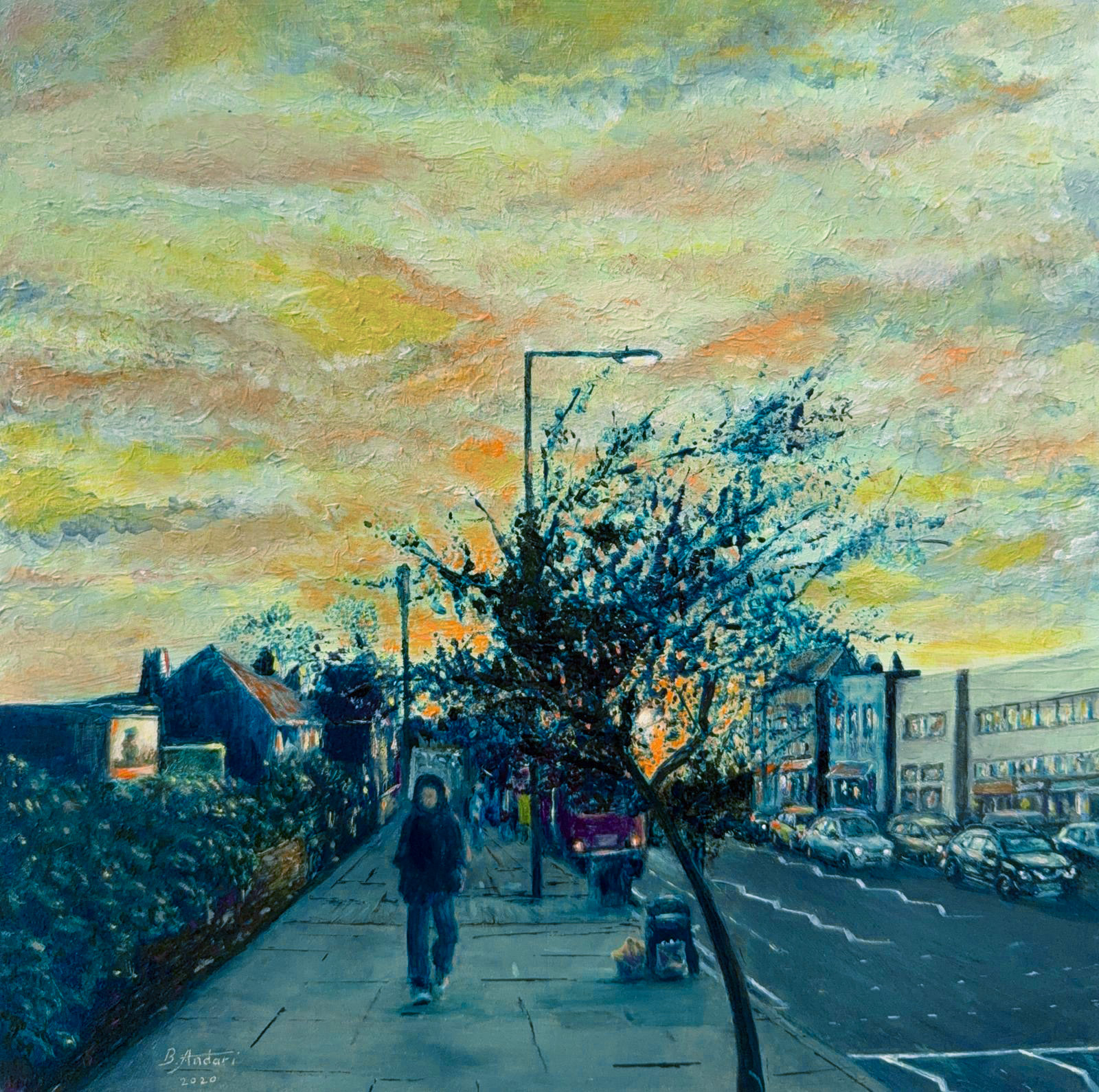Bassam Andari: Creating Art without Borders
Tuesday, October 7, 2025

Bassam Andari is a Lebanese-British self-taught artist based in London. After a long career in journalism, he turned to painting as a powerful medium for storytelling, channelling his passion for human emotion and experience into landscapes and figurative works.
The 1975 war that devastated Lebanon left a lasting impression on Bassam, who was a child at the time. That early exposure to conflict shaped his understanding of people’s struggles, relationships, and emotional resilience. As a result, he grew into a strong advocate for human rights and social justice, with a firm stance against war and corruption.
Themes of loneliness frequently emerge in his work too, whether through solitary figures or evocative landscapes. Bassam invites viewers to look beyond the surface of his paintings—to consider the story behind each composition and the intention behind his choice of subject matter. His art often carries a distinct mood, one that may be poetic, mysterious, or symbolic. Though rooted in realism, his style blends impressionistic elements to create a layered, emotionally resonant experience.
ArtDependence (AD): How does your work reflect your view of the world right now?
Bassam Andari (BA): My work reflects my hopes of a better world but not my view of it because, in my view, the world is not in a good shape currently. I express my feelings in different ways. I have paintings speak about sorrow and pain and I others that reflect hope and happiness. I don’t believe in sticking to one mood in my art because that’s not how we are as humans. We might sing when we’re happy or cry when we’re sad and our art should reflect both kinds of emotions.
AD: What role do you think art plays in connecting people today?
BA: Art is a powerful form of communication. It is a window to the hidden worlds of fellow humans, through which people discover what relates to them, and what sometimes mirrors their soul, by observing and reflecting. When someone from another continent admires or buys your work you know that they’ve connected and that your story meant something to them and that’s priceless.

Bassam Andari, Strolling into Sunset, 2025
AD: Can you tell us the story behind your painting 'Strolling into Sunset' ?
BA: Inspired by a beautiful sunset that I saw as I opened my front door and a father and son happily walking by, I created this explosion of warm colours that reflect my love for nature and humanity, represented here in parenthood, and my attempt to see them blend into each other and unite in a beautiful image that makes people dream and connect.
AD: What message or feeling do you hope viewers take away from your art?
BA: I hope that when people see my art they feel that they are part of a wider world that shares their love of nature, beauty, peace and social justice.
AD: What inspired you to take part in the Art to Collect project?
BA: It is important to any artist to connect with art lovers and collectors around the world. Art to Collect does that and that fact that it connects collectors directly with the artist instead of forming a barrier between the two was an important factor to me.
Main Image: Bassam Andari, Sunset in Harrow, 2025
